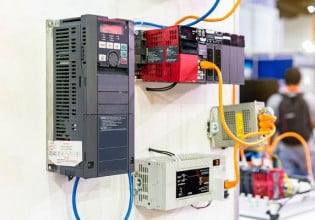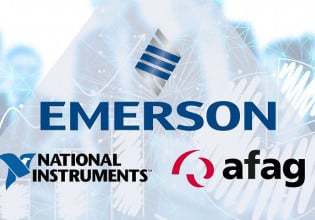ASRock Industrial Introduces IoT Controller for Factory Automation
ASRock Industrial announces the new iEP-5000G family of IoT controllers with power inputs, tolerances, and IO communication capabilities designed for the factory floor.
The iEP-5000 family of IoT controllers. Image used courtesy of ASRock
ASRock Industrial PC
For the better part of four years, ASRock has been focusing on supplying the world with motherboards, edge computers, and other PC-related products specifically designed for industrial markets. ASRock has a full line of industrial motherboards from full-sized ATX to Mini-ITX and Mini-STX. Also within ASRock’s product line is their industrial fanless embedded Box PC (why fanless? It keeps dust and contaminants from entering the computer). These PCs are well-suited for fulfilling computing needs isolated to the factory floor. Recently ASRock has released its newest product family of IoT controllers, the iEP-5000G.

The iEP-5000 family of IoT controllers. Image used courtesy of ASRock
iEP-5000G Industrial IoT Controller
An IoT controller is an industrial embedded computer that can collect data from machine sensors or remote IO terminals, process that data, and then communicate that data to a cloud computing software. The advantage of an IoT controller is the ability to store and access information about your factory from the factory floor. The iEP5000 utilizes an Intel Atom x6000E processor and makes use of three different kinds of wireless network communications 4G LTE, Wi-Fi 6E, and BT 5.2 RF.
The iEP-5000G is purpose-built for flexible IO and expansion ports, common to the shop floor, including four digital inputs and four digital outputs, Gigabit Ethernet, a serial port capable to be configured as RS-232 or RS-485, and a CANBus connector allowing support of two CAN bus networks.
Physically, the IoT controller makes use of a fanless design and has a wide temperature range -40°C to 70°C. The PC can be powered by 6-30 VDC and contains internal surge protection of up to 80 volts. Mounting options allow it to be placed on a DIN rail inside the cabinet or mounted on a wall.
What is IoT Anyway?
The industrial internet of things or ‘IIoT’ is a common buzzword floating around the industry these days, and with the advancement in the internet security of cloud storage and cloud computing, many factories are taking advantage of this technology. A typical factory with multiple assembly machines could have hundreds or even thousands of sensors and devices all collecting data on the assembly process. Until recently, that data was processed and stored locally within the factory, some machines are still not collecting data at all and rely entirely on people to determine if the machine is running efficiently or not.

IoT technology allows monitoring and optimization of nearly every process, from agriculture to welding. The result is a more efficient, effective process. Image used courtesy of ASRock
With IoT technology, we have the ability to collect, store, process, and display data collected from an assembly process all within the factory or from a remote location. Being able to manage this data remotely has made the industrial world smaller. Even with factories overseas, we have the ability to remotely connect and monitor machine performance, scrap and waste generation, or even the most recent faults that have occurred.
Bridging IT and OT
When connecting industrial equipment to the internet, there is always a concern for data corruption or network disruption on both the IT (information technology) side and the OT (operation technology) side. Some factories collect and store sensitive data about their products - having that information leaked to the world could destroy a company's bottom line. Because of these issues, it's important to have a solid IoT bridge to connect a company's IT and OT infrastructure.
Industrial Applications
Most modern assembly machines already have some form of data collection. However, accessing this data remotely remains a new challenge for many companies. The advantage of being able to know the status of your machine from anywhere in the world presents both security disadvantages (which are continually addressed by manufacturers), but some massive advantages as well.
For maintenance personnel, troubleshooting can start before arriving on-site by accessing top or occurring faults from a web page to isolate or eliminate possible suspect issues. For management, knowing if your newly purchased assembly machine is performing at a rate that will ensure your return on investment can be priceless.
As more companies like ASRock offer hardware and software that supports IoT technology, the IoT movement will continue to grow.







